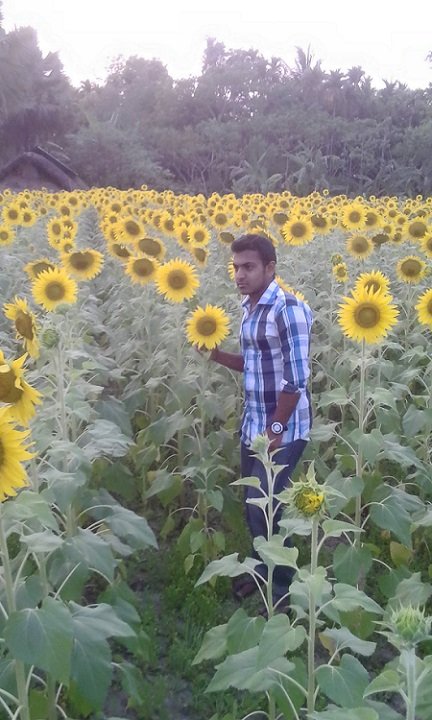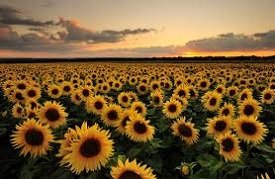Sunflowers sunflowers are grown for beauty and harvested for seed.
An annual plant, sunflowers have big, daisy-like flower faces of bright yellow petals (and occasionally red) and brown centers that ripen into heavy heads filled with seeds.
Tall and coarse, the plants have creeping or tuberous roots and large, bristly leaves. Some sunflowers grow to over 16 feet in height, though there are also varieties today that have been developed for small spaces and containers.
Most sunflowers are remarkably tough and easy to grow as long as the soil is not waterlogged. Most are heat- and drought-tolerant. They make excellent cut flowers and many are attractive to bees and birds.
Learn more about why you should start growing these happy flowers in your garden.
PLANTING
Sunflowers grow best in locations with direct sunlight ; they prefer long, hot summers to flower well.
Sunflowers have long tap roots that need to stretch out, so the plants prefer well-dug, loose, well-draining soil; in preparing a bed, dig down 2 feet in depth and about 3 feet across to ensure the soil isn’t too compact.
Find a well-drained location, and prepare your soil by digging an area of about 2-3 feet in circumference to a depth of about 2 feet.
Though they’re not too fussy, sunflowers thrive in slightly acidic to somewhat alkaline soil (pH 6.0 to 7.5).
Sunflowers are heavy feeders so the soil needs to be nutrient-rich with organic matter or composted (aged) manure. Or, work in a slow release granular fertilizer 8 inches deep into your soil.
If possible, put seeds in a spot that is sheltered from strong winds, perhaps along a fence or near a building.
Before planting, decide whether or not you want to grow a fun sunflower tower.
Sunflowers
While the plant is small, water around the root zone, about 3 to 4 in. from the plant. To protect the plant, it may help to put snail or slug bait around the stem.
Once the plant is established, water deeply though infrequently to encourage deep rooting. Unless the weather is exceptionally wet or dry, water once a week with several gallons of water.
Feed plants only sparingly; overfertilization can cause stems to break in the fall. You can add diluted fertilizer into the water, though avoid getting the fertilizer near the plant’s base; it may help to build a moat in a circle around the plant about 18 inches out.
Tall species and cultivars require support. Bamboo stakes are a good choice for any plant that has a strong, single stem and needs support for a short period of time.
PESTS/DISEASES
Birds and squirrels will show interest in the seeds. If you plan to use the seeds, deter critters with barrier devices. As seed heads mature and flowers droop, you can cover each one with white polyspun garden fleece.
If you have deer, keep them at bay with a tall wire barrier.
Sunflowers are relatively insect-free. A small gray moth sometimes lays its eggs in the blossoms. Pick the worms from the plants.
Downy mildew, rust, and powdery mildew can also affect the plants. If fungal diseases are spotted early, spray with a general garden fungicide.
HARVEST/STORAGE
For indoor bouquets, cut the main stem just before its flower bud has a chance to open to encourage side blooms.
Cut stems early in the morning. Harvesting flowers during middle of the day may lead to flower wilting.
Handle sunflowers gently. The flowers should last at least a week in water at room temperature.